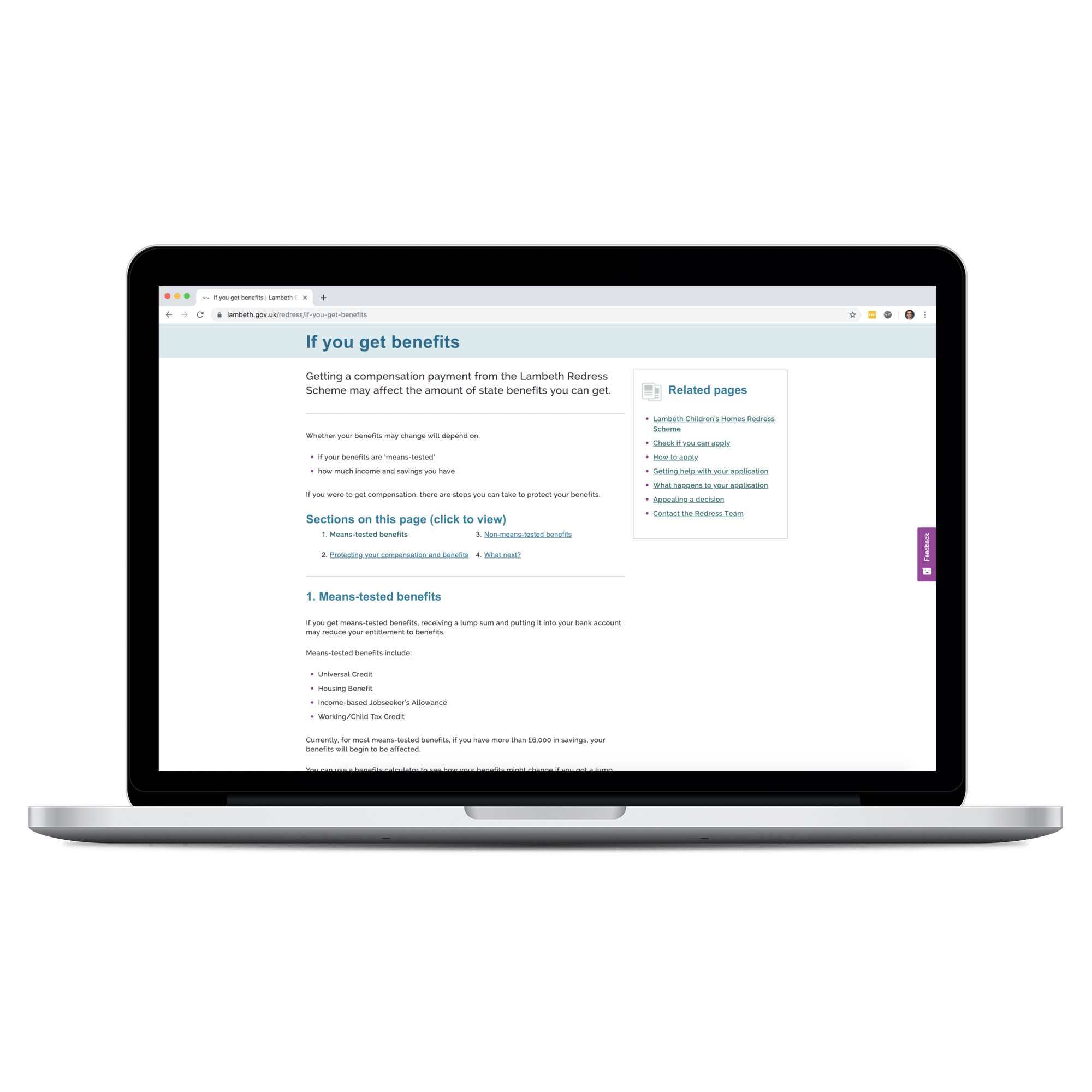The Lambeth Redress Scheme is the first of its kind in the UK to offer compensation to people who suffered abuse in the past at a children’s home.
Lambeth Council, who runs the scheme, had already published information online about the scheme. Its website content catered for many different audiences:
- abuse survivors
- people helping survivors with their application (like solicitors, family and friends)
- others (like journalists) looking for background about the scheme
And while more than 1,000 people had applied to the scheme so far, feedback from survivors was that the information was hard to understand and could be made clearer.
To encourage as many eligible people as possible to apply, Lambeth asked Helpful to review and then improve the website content.
User-centred approach
We began with identifying high-level user needs, writing these in the ‘user story’ format (“As a… I want to… so I can”). We recommended that Lambeth focus on survivors as the primary audience, and move the less critical ‘background’ information to the main Lambeth website.
We analysed the existing content and broke it down into smaller ‘content items’. We then re-ordered it in a more logical, step-by-step approach to meet users’ needs. For each content item, we listed the ‘user acceptance criteria’: the essential pieces of information that the user would need at each step of the application process.
We then validated our content plan. In an ideal world, this would have been with actual or potential applicants. As this wasn’t possible, we checked our content plan with 2 survivor advocates and the client in a card-sorting exercise.
With our iterated and agreed content plan in place, we then re-wrote the content using writing-for-web best principles:
- plain English
- no jargon
- short sentences and paragraphs
- scannable content (using headings and lists)
- inverted pyramid structure (most important information at the top of a page)
Feedback and sign-off
Both the survivor advocates and the Redress team commented on the draft using Google Docs. All the stakeholders could also follow and comment on progress using Trello.
At the end of the production process, the agreed text was sent to the Redress Scheme steering group for final sign-off. Thanks to the early and regular involvement of the client, the group approved the content with only minor changes.
The result is clearer copy that will hopefully encourage more people to apply.


